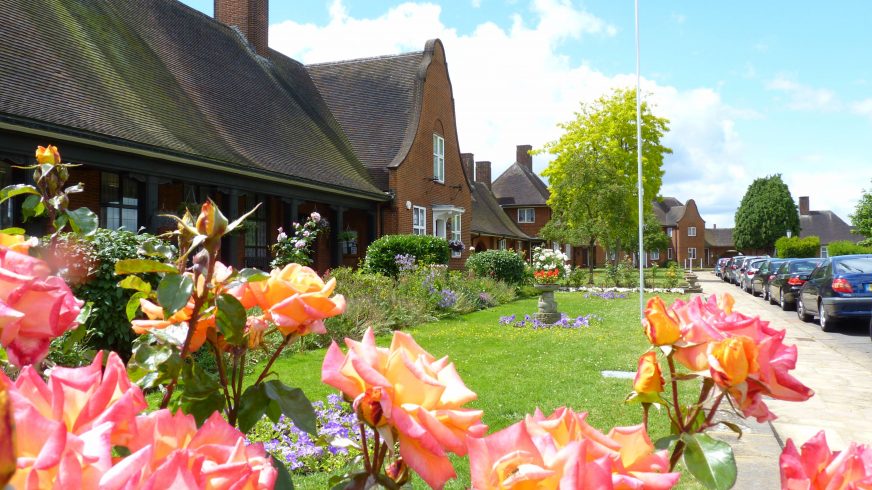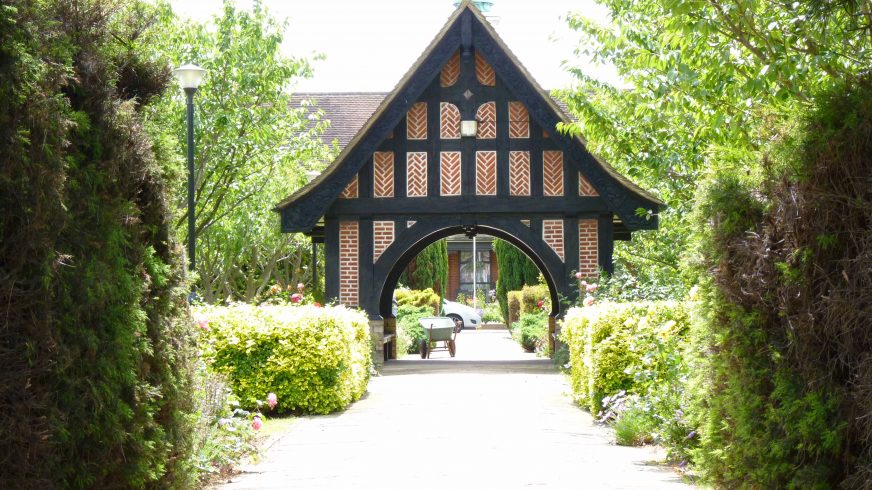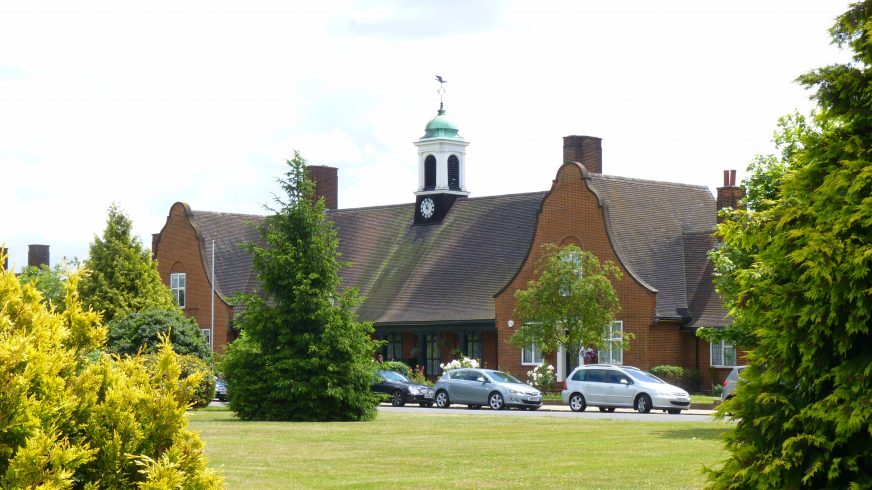“This article is being written almost a year after my retirement from my dual roles as Clerk to both The Charity of Elizabeth Jane Jones (EJJ) and Heston Parochial Charities (HPC), two Almshouse charities based in the London Borough of Hounslow, yet proximity was about their only similarity, apart from the Clerk!. HPC is very small – just 4 flats in a purpose built block overlooking part of Osterley Park – yet extremely well reserved, so my comments hereafter relate exclusively to EJJ.
One of the last events I hosted at EJJ was a lunch meeting for members of the West London Almshouse Group (WLAG), an entity whose formation was spawned in part by a lunch I held at my former charity to say goodbye and thank you to Anthony Leask – who was about to retire as the Director of the Almshouse Association – to which some 4 or 5 Clerks from other local Almshouses were invited. The WLAG lunch meeting in March, 2018, was attended by Julian Marzak, on behalf of the Association of which he was then an Assistant Director, and he it was that urged me to commit my comments to writing, so that others might benefit from my near 20 years’ experience as an Almshouse Clerk.

After spending some 30 years in the City’s financial markets, following Sandhurst and 6 years of commissioned service, I entered the Almshouse sector, as a Nominative Trustee, in 1998. It soon became apparent that most of their practices were fairly antiquated so when the then Clerk resigned, I threw my hat into the ring to try to contribute much more by providing good administration and sound financial management. My second Clerk’s role was with EJJ and I first arrived at the Fairholme Estate in Bedfont, EJJ’s home, in March, 2003; taking over as Clerk the next month. Fairholme is a Grade II (arts & crafts) listed Estate, built between 1930 and 1935, consisting of 72 separate homes of differing sizes, with a large central Assembly Hall, all set symmetrically around, in a sort of squashed horseshoe shaped, roadway in some 12 acres of glorious, tranquil gardens, yet only half a mile south of Heathrow Terminal 4, roughly at mid runway, so very little aircraft noise in most winds;; Fairholme is near enough Utopia. a genuine haven from the hustle and bustle of urban life!
Moreover, EJJ is a paradox, a rarity among Almshouse charities, as the only object of the Trust Deed was to provide homes for the poor – no age specified, no geographic stipulations – and the Charity had no “rules” for the residents, other than, by tradition, no-one was allowed to walk on the grass under the age of 70, or before they had lived at Fairholme for 20 years! There was no Warden and no staff – other than the part time Clerk and a couple of contracted gardeners who had been there for years – no book to sign in or out, open gates and the only applied requirement was that everyone should be able to look after themselves, with such domiciliary support services as might be needed. Because of the sizes of some of the house – there are 12, 4-bedroom houses at Fairholme – children were welcome, so EJJ does accommodate lots of families.

Although I was
working single handed in the office, I managed to secure the services of a very
experienced Surveyor I had got to know very well whilst at my previous
Almshouses to advise generally about the properties, and to supervise all
refurbishments, by inviting tenders from those small builders he knew and
trusted – our previous builder was soon christened “Jack the Lad”, and his
slapdash workmanship ensured that his services were dispensed with fairly
quickly. At the same time, a local firm
of Chartered Accountants, with whom I had worked previously, were appointed to
help and advise the Clerk, as well as conducting a professional Audit. Hence, for the first time, the Trustees had
a small team, just 3 of us, to guide and advise them and the Charity for the
benefit of both EJJ, and its current and future residents. It was not until
2011, that additional staff were engaged formally, although the first appointee
has helped me a few years early with the accumulated backlog of filing! She was joined soon afterwards by a full time
gardener, when the previous head gardener retired, and then a couple of years
later, by a part time, Sage bookkeeper.
Lastly, in 2015, a part time secretary was appointed to take Board
Minutes amongst other duties.
Luckily, both the Chairmen I served
under, for several years each, were content to allow me to run EJJ without
interference for their entire tenure, so regular telephone and face to face
contact ensured they were kept fully appraised of everything that was happening
and allowed me to bounce ideas off them.
Much earlier, in 1997,
the then Trustees had embarked on an ambitious programme to refurbish the interior
of all the properties on the Estate but just 18 homes had been refurbished when
I arrived there. Annual income then, all
from WMCs, was about £146k, there were reserves of £105k yet the contractor’s
refurbishments were costing some £100k a year.
This situation was completely untenable without some major funding, so
all refurbishment work was halted whilst additional funds were sought. As it happened, I had establish an excellent
rapport with the Hammersmith branch of Allied Irish Bank at my previous
charity, so my request for assistance was received favourably and AIB agreed,
in principle, to grant EJJ a 20 year mortgage of £2.5m, at 1.125% over base,
within 10 days of their visit to Fairholme.
However, all thoughts of being able to re-start the refurbishments shortly
were soon dashed due to the procrastination of AIB’s lawyers. Luckily, I was able to raise a £100k loan
privately, so refurbishments could continue at a modest pace, pending receipt
of the mortgage monies. After over a
year of going through every hoop imaginable, EJJ did eventually received its
money, and an initial £975k was drawn down, with the balance of £1.525m
available, if and when needed.
One condition for the
mortgage was that WMCs had to be increased to more realistic levels – for
example, a 1-bed bungalow was then £39 a week and a 3-bedroom house was £70 a
week; After being in post for 6 months, a major hike to £70 and £120
respectively, with the larger 4-bedroom houses set at £150, was applied. In the absence of any guide lines, I had
devised a logical mathematical formula, based on the number of bedrooms, and
these new charges soon had a dramatic effect on EJJ’s cash flow
The improved cash
flow ensured that the pace of refurbishment quickened markedly, and attention
was devoted first to the Assembly Hall – new kitchen, new lavatories and a
proper office, as this was, and is, the
heart of Fairholme – to new soak-aways
for every house, all the cast iron gutters, with embossed motifs every few
feet, and downpipes on the house fronts were refurbished and no longer leaked –
and we avoided having to renew 99% of the cast iron work, for which a quote in
excess of £500k had been tendered, whereas the dedication and skill of one contractor,
who took each and every length down, then back to his workshop before re-fixing
them in their original positions, cost some £150k! – disabled ramps were built
where necessary, CCTV installed, a new garden shed built to house tractors and
all other garden equipment, more staff had been employed and the Estate’s
grounds and several individual gardens received awards regularly at the annual
London Gardens Society competition..

By the time I retired
in 2018, all but 6 houses – not given the “treatment” due to their resident’s
specific requests – had been fully refurbished and EJJ has spent more than £4m
on these improvements. Annual income had
grown to circa £550k by prudent cash flow management, reserves had been
re-built to nearly £600k, yet no beneficiary household was ever charged more
than some 65% of Local Housing Allowance,
I should also at this
late stage re-mention Anthony Leask with
whom I had forged a strong friendship
over the years and I was really delighted when he agreed to “come out of
retirement from all non-Association Almshouse matters” by agreeing to become an
EJJ Trustee in 2015. Entirely on his own initiative, he offered to conduct a
top-to-bottom review of EJJ, so that I could be certain that the charity I
handed over eventually to my successor was in as good a shape as possible. If I
were a proud man, I might not have mentioned this, as the 26 page “Leask
Report” found that we were not fully compliant 2 or 3 times on every page! Most of his issues dealt with relatively
minor matters, like all the latest Health & Safety rules, the lack of an
accident book, very few formal procedures or budgets had been agreed by the
Board, only embryonic risk assessments and no Disaster Recovery plan, etc. but
he concluded :-
“The length of this report and the number of recommendations might suggest the charity is not well. Such a perception would be wrong. There is a need for some change and for the improvements made in recent
years to be sustained, but overall the charity is well run; the almshouses are in good order;
the finances sound and the residents happy.”
There are a number of principles that have guided me throughout which I would like to share, as these formed the backbone of my tenure as an Almshouse Clerk.
- All of us, that is Trustees, management and employees are with their charity to try their very best to make life as comfortable and stress-free as possible for all beneficiaries (our residents)
- We are all are mere custodians of the charity and it is our duty to endeavour to pass it on in better shape, community and ambience that when we joined.
- Never be frightened to consult your peer group – the Almshouse Association itself, local Almshouse groups or even other Clerks – as many others will have faced, and solved similar issues in the past. As the saying goes “a problem shared is a problem halved”
- The Charity Commission (CC) seems to have changed its attitude to Almshouses, and are now much more helpful. EJJ changed its status and incorporated, with the full support of the CC, in 2015 so is now governed by a Trustee company with limited liability, still controlled by all the former Trustees who are now Directors of the Trustee company. More importantly, nothing else, apart from the Constitution has changed, same Charity number, same bank accounts, no need tore-register the property etc.
- Unless
a charity has massive reserves, Collective investment funds, specifically
designed for Charities are far easier to monitor than individual stocks and
shares. In particular, EJJ established a
policy to build up its M&G managed NAACIF funds until their combined value
was in excess of £1m, whereupon another investment manager might be used for
the next cycle of investments, until these also reach £1m, and then another,
and so on.
- Have
the courage of your convictions, as a Charity that stands still, is actually
losing ground. Never be frightened to investigate and analyse
any and every opportunity to expand / and or to provide better homes for the
beneficiaries. If your almshouses are in
an expensive area but difficult and costly to maintain, consider re-providing
perhaps more almshouses in a less expensive part of your area of benefit, and
then letting the original almshouses on a commercial basis for long term
investment. With careful planning, it
can be done!
I have tried in this
article to chronicle my Almshouse career and to highlight the various hurdles
faced, and then to conclude with those principles that have steered me through
some turbulent times. I hope that others
may benefit from my experiences.
Now I have retired, I am delighted to have handed over the reins of EJJ (and HPC) to Nigel Lucas whose Almshouse experience is similar to my own, so that I am sure the improvements highlighted in the Leask Report, will be followed through and that EJJ and Fairholme, my real haven for 18 years, will be in very safe and competent hands. “